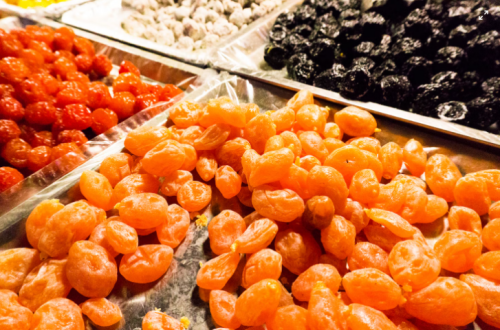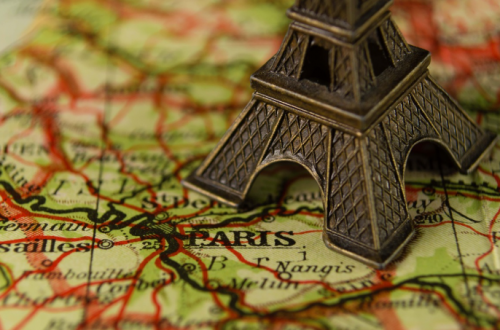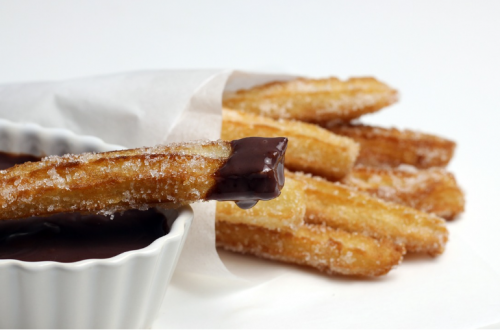
Coffee Culture Around the World: A Caffeine Lover’s Guide
Coffee isn’t just a drink; it’s a cultural phenomenon. Whether you’re a casual drinker or a true caffeine aficionado, understanding the diverse coffee cultures around the globe can deepen your appreciation for the bean. From the robust espresso in Italy to the intricate brewing techniques in Japan, coffee plays a significant role in daily life and social interaction worldwide. So, if you’re looking to explore how different cultures embrace their coffee, this guide is your perfect brew.
Introduction: A Global Love Affair with Coffee

Coffee is one of the most widely consumed beverages on Earth, with millions of people starting their day with a steaming cup of java. While its origins trace back to Ethiopia, coffee’s journey has transcended borders, influencing cultures far and wide. In some places, it’s a ritual; in others, it’s a symbol of social status. This guide will take you on a caffeinated journey around the world, exploring how different countries brew, serve, and savor their coffee.
The Origins of Coffee: From Ethiopia to the World
The Discovery of Coffee in Ethiopia
Legend has it that coffee was discovered in Ethiopia by a goat herder named Kaldi. According to the tale, Kaldi noticed his goats becoming energetic after eating red berries from a certain tree. Curious, he tried the berries himself and experienced a similar burst of energy. The local monks began brewing a drink from the berries to stay awake during prayers, and the first coffee was born.
From this humble beginning in the highlands of Ethiopia, coffee spread across the Arab world, where it became an integral part of society.
Coffee’s Journey to the Arab World
By the 15th century, coffee had found its way into the Yemeni region of Arabia. Yemeni merchants played a crucial role in cultivating coffee beans and exporting them across the Middle East and beyond. The first coffeehouse, or “qahveh khaneh,” opened in Istanbul in 1554, marking the beginning of coffee’s integration into social life in the Ottoman Empire. These establishments became vibrant cultural hubs where intellectuals, poets, and politicians would gather to discuss ideas over cups of strong, dark coffee.
Europe’s Coffee Culture: From Italy to Scandinavia
Italy: The Art of Espresso
If there’s one country that has mastered the art of coffee, it’s Italy. Espresso, the cornerstone of Italian coffee culture, is brewed with a concentrated method that produces a rich, intense shot of coffee. Italians don’t simply drink coffee; they perform a ritual. An espresso is often consumed standing at the bar, a quick yet satisfying interaction that represents a moment of social connection.
But Italy’s coffee culture isn’t just about espresso. In Milan, the “caffè latte” is a morning staple, while in Naples, coffee is often accompanied by a sweet pastry like a sfogliatella or a babà. Coffee in Italy is not merely a beverage but a symbol of Italian style, efficiency, and passion.
Scandinavia: Coffee Breaks and Hygge
In countries like Sweden, Norway, and Finland, coffee isn’t just a drink; it’s a way of life. In fact, Finland holds the title for the highest coffee consumption per capita in the world. The concept of “fika” in Sweden—a coffee break shared with friends or colleagues—reflects the country’s emphasis on slowing down and connecting with others. It’s not just about coffee but the entire experience: a moment of calm in an otherwise hectic day.
The Swedish tradition of fika is often accompanied by sweet pastries or sandwiches, creating an atmosphere of warmth and community. In Norway, coffee culture leans toward filter coffee, a lighter, more casual brew, while in Finland, “kahvi” is enjoyed with dark rye bread and cheese.
Coffee Culture in the Americas

The United States: The Rise of Coffee Chains
Coffee culture in the United States is as diverse as the country itself, with regional variations and an ever-evolving landscape. However, one trend stands out: the dominance of large coffee chains like Starbucks. These establishments have revolutionized the coffee industry, introducing flavored lattes, frappuccinos, and even non-coffee beverages to a broader audience.
While some purists may criticize the mass-market approach, there’s no denying the role coffee chains have played in shaping global coffee culture. From busy professionals grabbing a latte on their way to work to college students meeting for a study session, American coffee culture is fast-paced, customizable, and ever-changing.
Brazil: The Coffee Capital of the World
Brazil is the largest coffee producer in the world, and coffee is deeply embedded in its culture. Brazilians enjoy coffee at all hours of the day, often served in small cups, similar to Italian espresso. The national drink, “cafézinho,” is a sweetened, strong coffee enjoyed throughout the day, from morning to night. It’s often offered to guests as a gesture of hospitality, and no social gathering in Brazil is complete without it.
Brazil’s coffee culture reflects its warmth and openness, with coffee serving as both a daily necessity and a symbol of friendship and conviviality.
Coffee Culture in the Middle East and North Africa
Turkey: A Coffee Tradition Steeped in History
Turkish coffee is not just a drink; it’s a centuries-old tradition that has been passed down through generations. Prepared by boiling finely ground coffee beans with water and sugar in a special pot called a cezve, Turkish coffee is rich, thick, and strong. It’s typically served in small cups, accompanied by a glass of water and perhaps a sweet treat like Turkish delight.
The process of drinking Turkish coffee is almost as important as the coffee itself. Often shared in a group setting, it becomes a social event where conversation flows as freely as the coffee.
Morocco: Coffee and Spices, A Unique Blend
Moroccan coffee culture is a blend of Arab traditions and French influence. Coffee in Morocco is often spiced with cinnamon, cardamom, and sometimes cloves, creating a rich and aromatic experience. In addition to black coffee, the Moroccans enjoy coffee with milk, known as “café au lait,” a holdover from the French colonial era. Coffee drinking in Morocco is a social activity, often enjoyed in cafes or during family gatherings.
Asia’s Take on Coffee
Vietnam: The Unique Egg Coffee

Vietnam offers a truly unique coffee experience with its egg coffee, or “cà phê trứng.” This delightful concoction consists of strong coffee topped with a creamy, frothy mixture of egg yolk, sugar, and sweetened condensed milk. The result is a rich, velvety coffee that’s both a treat and a work of art. Egg coffee has its roots in the 1940s, born out of necessity when milk was in short supply during wartime.
Japan: The Precision of Japanese Coffee
Japanese coffee culture is known for its meticulousness. The Japanese are obsessed with precision and quality, and that extends to their coffee. In cafes, you might find a highly refined brewing process, such as pour-over or siphon brewing, which requires careful attention to detail and timing. Coffee is often served with a small, delicate sweet treat, creating a moment of pure enjoyment and relaxation.
Modern Trends in Global Coffee Culture
The Rise of Third Wave Coffee
In recent years, there has been a shift in coffee culture known as the “Third Wave” movement. Unlike the mass-market coffee chains, Third Wave coffee places a strong emphasis on the origin of the beans, artisanal roasting techniques, and sustainable farming practices. Coffee enthusiasts now appreciate the subtleties of flavor profiles, much like wine connoisseurs, and are more likely to seek out specialty coffee shops that emphasize quality over quantity.
Specialty Coffee and Sustainability
As the coffee industry faces increasing pressure to address environmental concerns, many roasters and cafes are focusing on sustainability. Fairtrade coffee, direct sourcing, and organic practices are becoming more common. Specialty coffee shops often work directly with farmers to ensure that the beans are grown and harvested in a way that is both environmentally friendly and economically beneficial to the farmers. This focus on sustainability not only elevates the quality of the coffee but also supports ethical practices across the supply chain.
Conclusion: Coffee as a Reflection of Culture

From the humble beginnings in Ethiopia to the global coffee culture we know today, coffee has evolved into an expression of identity, culture, and tradition across the world. Whether it’s a quick espresso in Italy, a leisurely fika in Sweden, or a cup of Turkish coffee shared with friends, coffee serves as a bridge between cultures, a symbol of hospitality, and a universal language of connection.
As global coffee culture continues to evolve, it reflects both the local traditions of each region and the shared passion for the beverage that unites coffee lovers everywhere. So, the next time you sip your favorite cup, remember that you’re part of a much larger global story—a story of discovery, creativity, and community, all bound together by the love of coffee.
FAQs About Coffee Culture Around the World

1. What is the difference between espresso and regular coffee?
Espresso is a concentrated form of coffee made by forcing hot water through finely-ground coffee beans under high pressure. It has a stronger, more intense flavor compared to regular drip coffee, which is brewed by letting water pass through coarser grounds at a slower pace.
2. Why is coffee so important in Italy?
In Italy, coffee is a cultural institution. It’s more than just a drink; it’s a moment of social interaction, often enjoyed quickly at the bar while standing. The art of making espresso is taken very seriously, and coffee is integral to Italian daily life, from morning routines to social gatherings.
3. How is Vietnamese egg coffee made?
Vietnamese egg coffee, or “cà phê trứng,” is made by whipping egg yolks with sugar and sweetened condensed milk until creamy, then adding strong, black Vietnamese coffee. The result is a rich, velvety coffee with a unique, custard-like texture.
4. Why do Scandinavian countries drink so much coffee?
Scandinavian countries, particularly Finland and Sweden, have some of the highest per capita coffee consumption rates in the world. Coffee breaks, known as “fika” in Sweden, are seen as an essential part of social life, offering a moment of relaxation and connection. Coffee drinking is deeply woven into the fabric of daily routines and social customs in these countries.
5. What is “Third Wave” coffee?
Third Wave coffee refers to a movement that focuses on the quality, sustainability, and origin of the coffee beans. This movement emphasizes single-origin beans, artisanal roasting, and ethical sourcing, with an emphasis on highlighting the unique flavors of each coffee region, much like wine-tasting.




